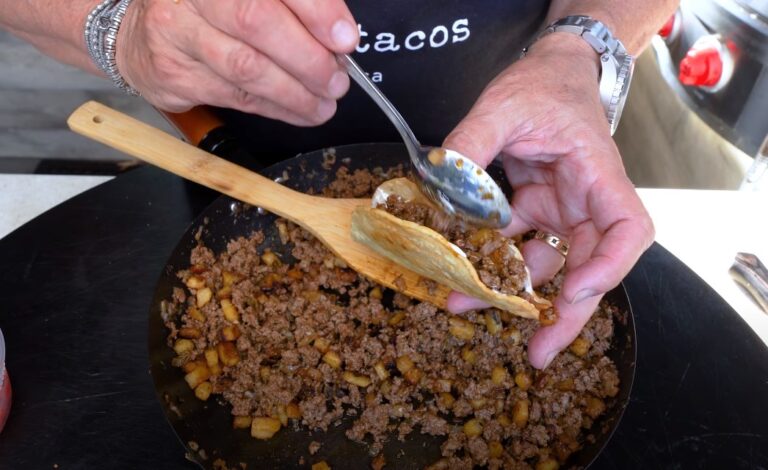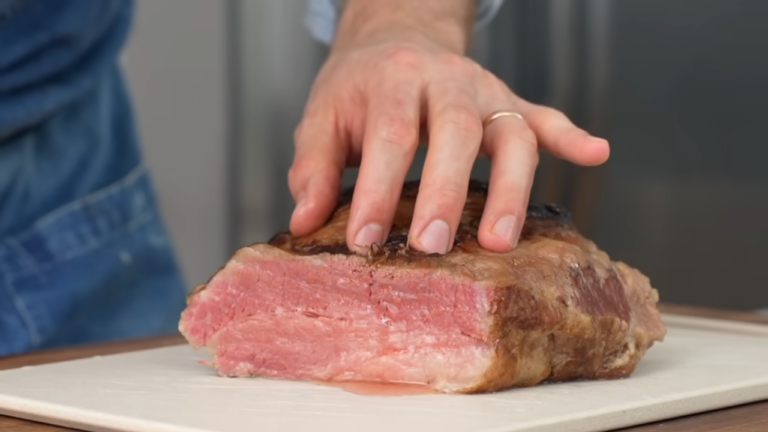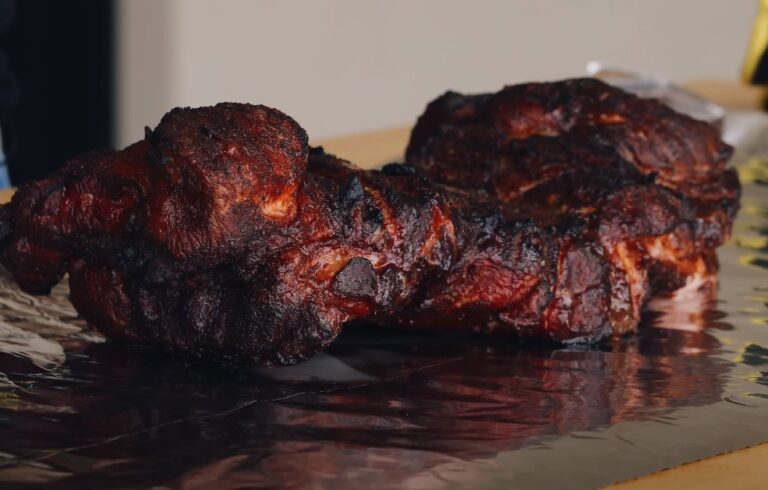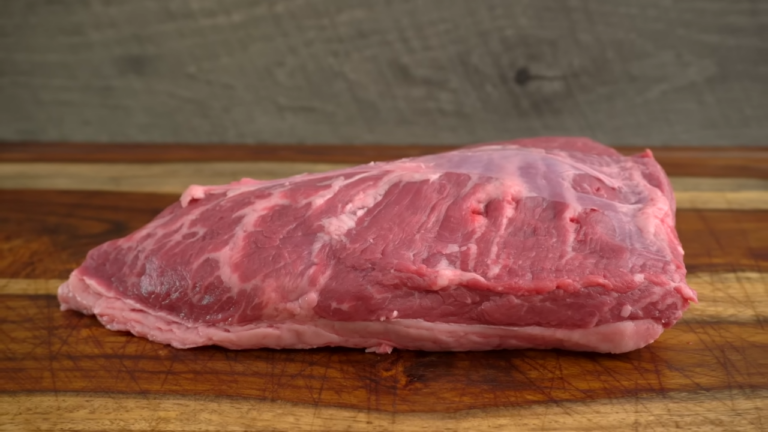Today, I’m gonna tell you about one of the most underrated things in the kitchen – the pork neck bone.
A lot of people probably look at it and think, “What’s this bony thing gonna do for me?” Little that they know, this thing is a flavor bomb. Whenever I throw one of these bad boys in a pot, it takes my food to the next level. The meat just falls right off, and it gives everything this deep, rich taste.
And forget about it absorbing flavors! I could season this thing with my eyes closed, and it’ll hold onto that flavor for dear life.
So, how do we tackle this flavor superstar? Well, first things first – you gotta get yourself some quality neck bones. Then, it’s time to slap on some seasoning. After that, just throw it in a slow cooker or pot and let it do its thing.
The good news is you can put it in just about anything – soup, chili, you name it. No matter what you cook, those neck bones are gonna make it ten times better. In this article, I’ll explain how to do it, so let’s begin.
First, Select Quality Neck Bones
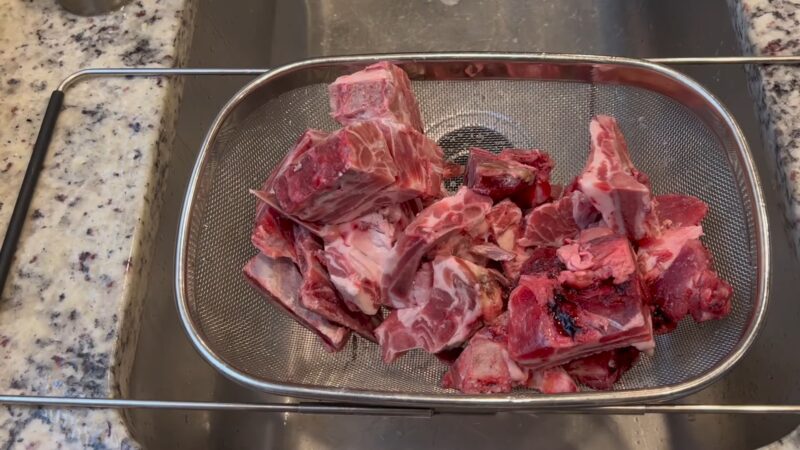
Quality is key when it comes to any ingredient, and pork neck bones are no exception. When you’re shopping for your bones, look for pieces that have a good amount of meat attached to them. They should have a bright pink color and a fresh, clean smell.
- Freshness: Avoid any pieces that have a strong, unpleasant smell or a grayish color, as these are signs of age or poor handling.
- Size: You’ll also want to consider the size of the neck bones. Smaller pieces are great for quicker cooking methods, while larger pieces are more suited to long, slow cooking.
- Provenance: Finally, if possible, try to source your neck bones from a local butcher who can tell you more about the provenance of the meat.
Preparation Process
Cleaning and Rinsing
Before you even start cooking, you need to clean pork neck bones. Rinse them good under cold water. If they are still nasty, scrub them off with a brush so that you can get all the impurities and gunk off. You wanna make sure the bones are squeaky clean.
Marinating Process
Marinating pork neck bones is not always needed, but it sure does make them tastier. You just gotta throw it all in a bag or dish with some soy sauce, garlic, ginger, and whatever else you love.
Leave it in there for a half hour to a whole hour and let all the yummy flavors soak right into the meat. The longer you leave it, the more the taste will get in there.
Pro Tip: For dishes like soups and stews, marinating isn’t always needed as the bones will be simmering in the liquid for a long period, absorbing all the flavors during the cooking process.
Cooking Techniques
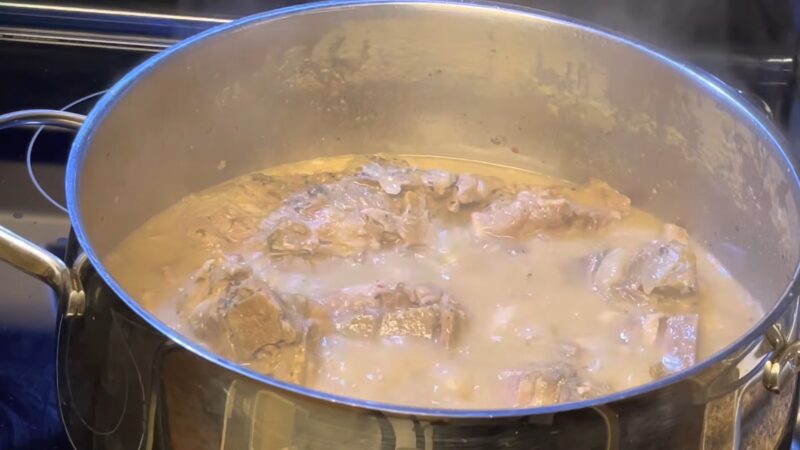
Boiling
Boiling is the easiest way to get the bones all soft and flavorful for your soup. Let them simmer away in water until everything good inside starts coming out. I’m talking about the marrow, collagen, and all that tasty stuff that makes your mouth water. Give it time and you’ll have yourself a super rich and delicious broth.
The secret is patience, my friend. Boil for a few hours AT LEAST. The longer the bones boil, the more good stuff they’ll give up to the liquid. Also, don’t forget to skim off any foam or scum that pops up so your broth stays looking clean and clear.
Braising
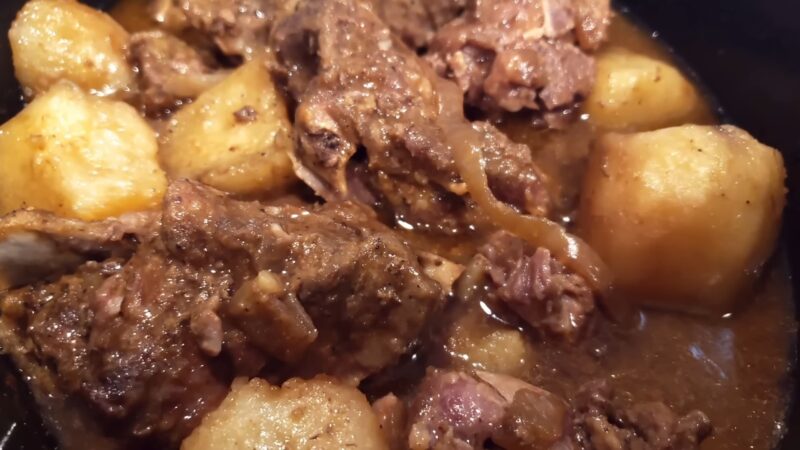
In this process, you want to sear that meat in a hot pan till it’s got a nice dark crust, as this adds some color and flavor. Then comes the good part.
You take those seared bones and simmer them low and slow in some liquid. Let that juice work its magic and seep right into the meat. Give it plenty of time to get tender and fall off the bone.
The best part is that the flavor just gets more intense the longer it cooks. The crust seals in the juices so they can’t escape, and it soaks up all the tasty flavors of what it’s cooking in.
This long cooking is perfect for things like ragus, pulled pork sandwiches, or anything else you wanna eat super tender and fall-off-the-bone good.
Closing Thoughts
Those pork neck bone things ain’t gonna win any beauty contests, but they sure do have flavor for days! You can simmer them up really well for the heartiest soup ever. Braise them down low and slow, and they’ll make your sauce so rich it’ll put you in a food coma.
Even throwing them on the grill with a slap of BBQ sauce will add some deep, rich flavor. No matter what you do with them, those neck bones are gonna make your food ten times better.
So next time you’re at the butcher, don’t turn your nose up at those ugly neck bones. I know they ain’t much to look at, but they just might be the secret to making all your other ingredients sing. Give them a chance – I promise you won’t be sorry!
Hi, I’m George Stewart. I’m 47 years old and a father of two who loves BBQ and French cuisine. On this blog, I share my cooking experiences and favorite recipes. Whether you’re into grilling or gourmet dining, I hope you find something here that inspires your next meal. Welcome and enjoy!










